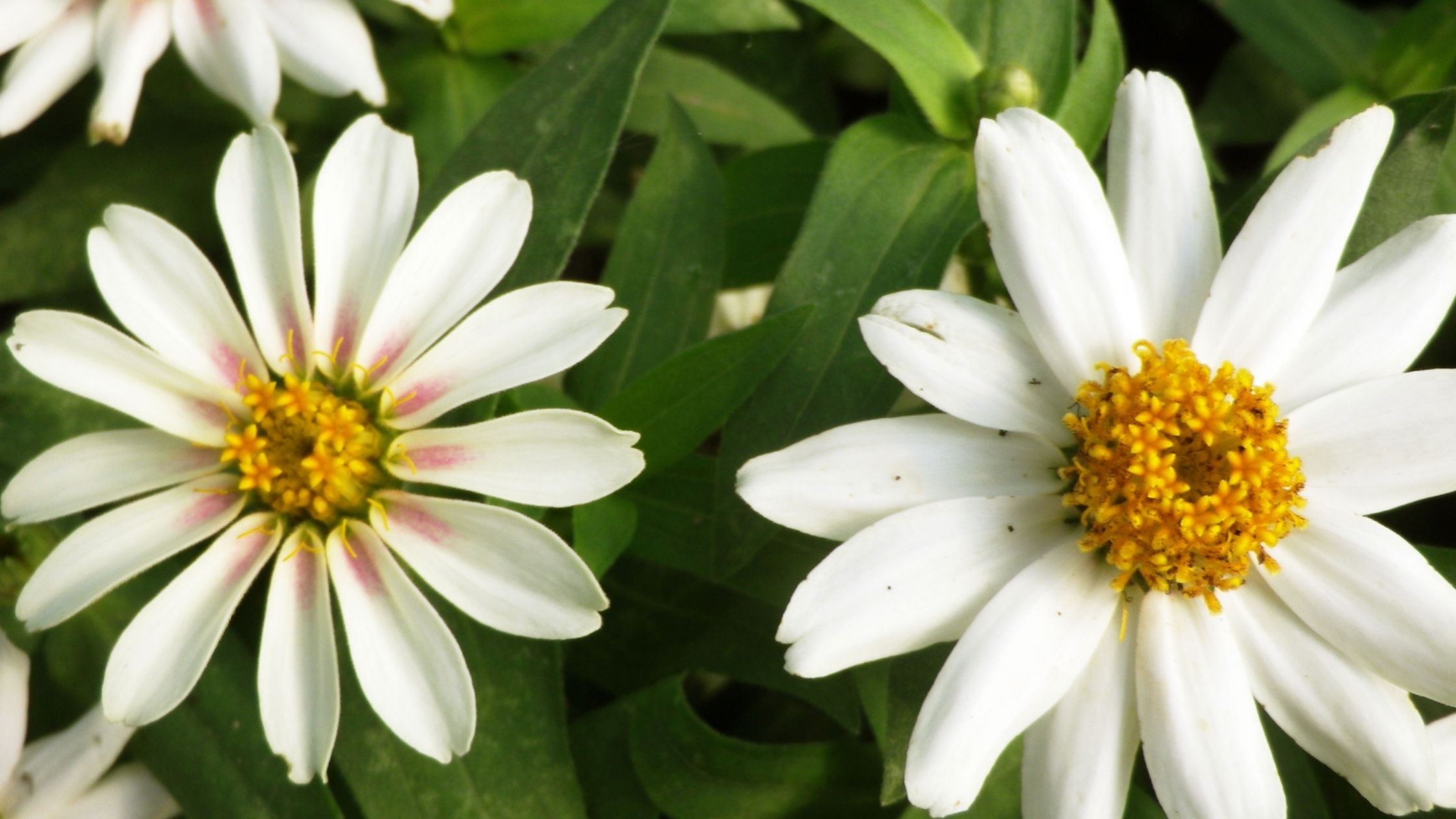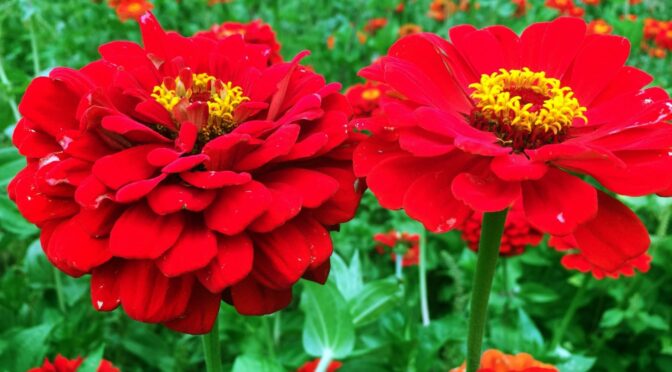If you’re looking to add more color to your garden in 2022, you might want to add zinnias to your seed list! These colorful flowers are some of the easiest annual flowers to grow. They’re also an excellent nectar source for pollinators and are long-lasting cut flowers.
Most of the zinnia seeds you’ll find at local garden stores are Zinnia elegans. At SESE, we also carry a couple of varieties of Zinnia peruviana and Zinnia marylandica. Zinnias provide a lot of variety, so you’re sure to find something to suit your garden’s design, from the spiky-looking blooms of the cactus-flowered zinnia to the dark red double flowers of Red Beauty.
Prepare a Bed
Zinnias are pretty adaptable, but they need a bed that receives full sun. Though they’ll tolerate a wide range of soil conditions, well-drained soil rich in organic matter is ideal. Spreading a couple of inches of finished compost over the bed and broad forking it can help your plants thrive.
Planting Zinnias
Here in the Southeast, the easiest way to plant zinnias is to direct sow them when all danger of frost has passed, and the soil is around 70°F. Sow the seeds about 1/4 inch deep. Sow a few every 1 to 2 weeks for several weeks to ensure a steady supply of blooms all season.
Alternatively, you can start them indoors 3 to 4 weeks before your last expected frost. Zinnias should be transplanted when they’re still relatively small, and you should take care to disturb the roots as little as possible.

These showy flowers make excellent companion plants for various vegetable crops, including squash and beans. They attract bees, butterflies, and other pollinators, ensuring good pollination and wasps and lady beetles that feed on pests.
Zinnia Care
Thin zinnias so that they receive good air circulation and sunlight. Depending on the mature size of the variety you select, you should thin your zinnias from 12 to 24 inches apart. Keeping your zinnia bed weeded and consistent watering will encourage your zinnias to bloom more.
Taller zinnias may need support to prevent lodging. You can stake individual plants, grow them along a fence, or let them grow through a suspended flower support netting, fencing, or other similar material.
If you’re interested in bouquets, you can continuously harvest zinnias. Cutting flowers encourages them to bloom more. If you’re not harvesting cut flowers, deadheading also encourages blooming. You may want to let some spent flowers go to seed, especially towards the end of the season.
Saving Seed from Zinnias
Zinnias self-seed well, but it’s also quite simple to save seed from them. You can use it to plant new beds the following year, share with friends, or join a seed swap.
Wait until the flower heads are fully mature, brown, and dry to harvest them. If the petals are still colorful and pliable, the seeds may not have fully matured.
Harvest the mature flower heads on a dry day. Bring them indoors and pull the flower heads open. The seeds are brown and arrowhead-shaped.
Allow the seeds to dry on a screen out of direct sunlight for at least a week. When the seeds are fully dry they should snap cleanly in half and not bend.
Store them in an airtight container, checking carefully for any signs of moisture for the first two weeks. If you see moisture, place them back on the screen and dry them for a longer period.

